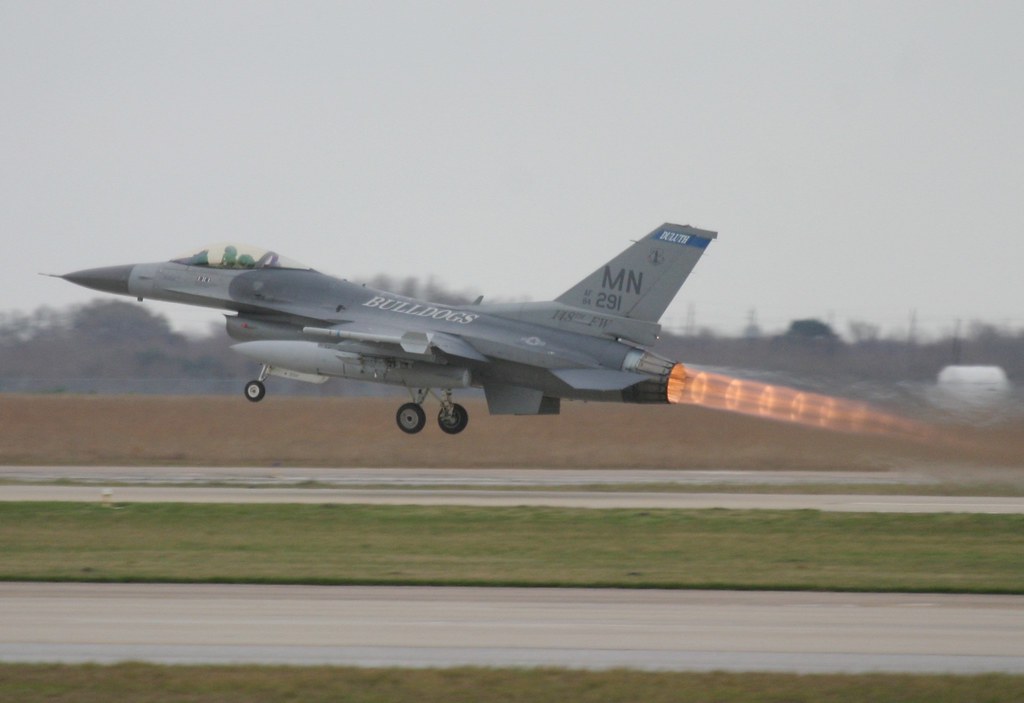
When the F-16 Fighting Falcon first soared into the skies in the late 1970s, it was lauded as a breakthrough in aerial combat, a multirole fighter that changed the landscape of air warfare.

Affectionately dubbed the “Viper” by its pilots, the F-16 has since been a symbol of air superiority and a testament to American engineering prowess.

With thousands of F-16s delivered globally, this agile jet has proven its mettle in the skies above major global conflicts for the past fifty years.

The F-16 Viper, renowned for its versatility and adaptability, has not rested on its laurels. The latest Block 70/72 variant, equipped with an advanced AN/APG-83 active electronically scanned array (AESA) radar, competes with fifth-generation fighters in terms of capabilities.

It boasts an automated ground collision avoidance system, an enhanced mission computer, and a sophisticated electronic warfare suite. This cutting-edge technology allows for seamless all-weather targeting and data-sharing with other advanced aircraft, notably the F-22 Raptor and F-35 Lightning II.

This fighter’s global influence extends beyond the battlefield, having set a precedent for collaborative defense programs, most notably influencing the F-35 Lightning II’s development. In terms of interoperability and technology sharing, this model of international cooperation has proven to be a strategic asset.

The F-16 was designed and manufactured under a consortium of countries that included the United States, Belgium, Denmark, Norway, Portugal, and the Netherlands. Similarly, the F-35 program is comprised of eight other countries.

Some of the most memorable missions of the F-16 include scrambling to defend the homeland minutes after the terrorist attacks of September 11, 2001. The surprise caused by the Al Qaeda attacks was so great that F-16 fighter jets took to the sky without any live munitions and were ready to ram hijacked planes before they could reach their targets.

Now, as the world braces for the Viper’s next chapter, the war-torn skies of Eastern Europe beckon.

In an unprecedented show of commitment to modernization, Lockheed Martin, the manufacturer of the F-16, has resumed production to meet the overwhelming demand from international customers.

The aircraft’s role as a force multiplier in various air-to-air and air-to-ground roles has not diminished, rather it has evolved to cater to the diverse requirements of its operators, reflecting its incredible adaptability and sustainability.

As we look to the future of aerial combat and the F-16’s role within it, this seasoned warrior seems far from retirement.

It has adapted to the changing face of warfare, offering a blend of proven reliability, advanced technology, and cost-effectiveness that is unparalleled.

It is not hyperbole to state that the F-16 remains an essential element of numerous air forces’ arsenals, an aircraft that has shaped the very fabric of air combat.

As Ukraine prepares to integrate the Viper into its fleet, the F-16 stands ready to soar once again, defending the skies and demonstrating the enduring legacy of a true airpower icon.
Relevant articles:
– The F-16 Viper Is a Fighter Jet Nearly No Nation Can Beat, The National Interest
– F-16 Fighting Falcon: The Best Fighter Jet of All Time?, nationalinterest.org
– The ultimate F, F-16.net
– Can America’s Aging, But Mighty F-16 Overpower One of Russia’s Most Advanced Fighters?, Popular Mechanics

